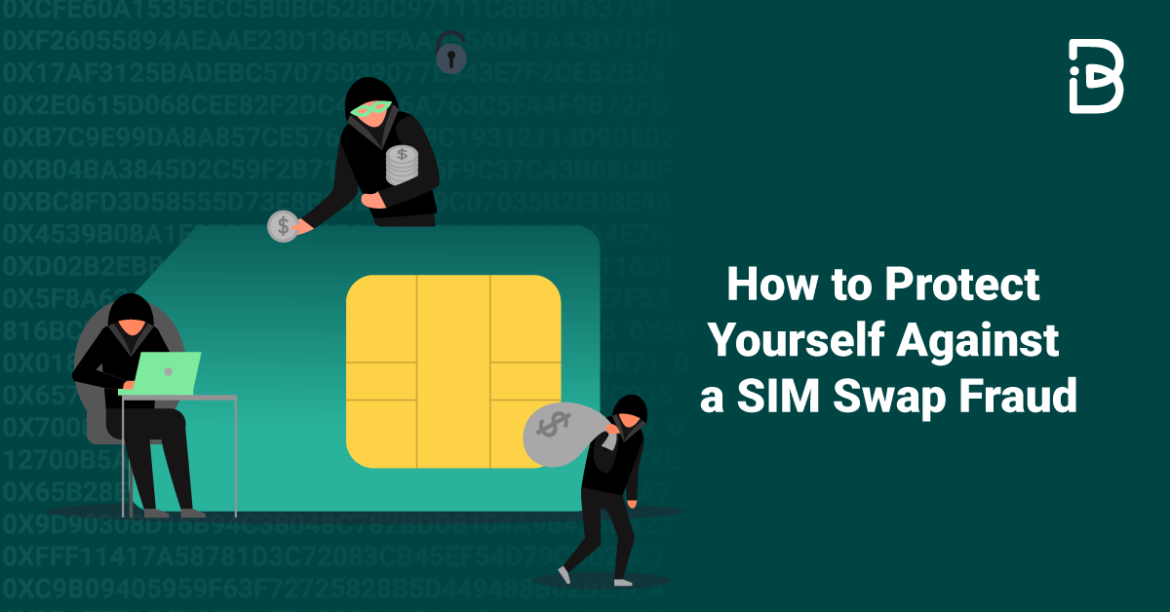In the ever-evolving landscape of cyber threats, a SIM swap attack represents a sophisticated and potentially devastating form of identity theft. Exploiting a vulnerability in mobile service provider protocols, criminals engage in SIM swapping, also called phone number hijacking, to fraudulently transfer a victim’s phone service to a SIM card they control.
By hijacking the phone number, the attackers aim to exploit vulnerabilities in 2FA systems and gain unauthorized access to the victim’s critical accounts, primarily those containing financial information. This blog post aims to shed light on what a SIM swap attack is, how it’s carried out, and most importantly, how to safeguard yourself from this cunning exploit.
Understanding the Mechanics and Risks of SIM Swap Attacks
Table of Contents
The Basics of SIM Swapping
A SIM (Subscriber Identity Module) card is a tiny chip in your mobile phone that stores your identity, phone number, and network authorization data. A SIM swap attack also known as SIM splitting or SIM hijacking occurs when a criminal manipulates a mobile phone carrier into transferring your phone number from your SIM card to one they control.
How the Attack Unfolds
The procedure usually initiates with the assailants collecting personal data concerning their victim, frequently accomplished through tactics such as phishing emails, social media surveillance, or exploiting data breaches. Using the extracted data, they fraudulently present themselves as the account holder to the mobile carrier.
Posing as the victim, the attackers claim to have lost their phone and require immediate action. They manipulate the carrier representative into transferring the phone number to a readily available SIM card under their control.
After the swap is finalized, the attacker seizes control of the victim’s phone number. This control can have dire consequences, as phone numbers are often linked to various sensitive accounts, including email, banking, and social media. The attacker can then reset passwords and gain access to these accounts, potentially leading to theft and significant financial loss.
How to Recognise a SIM Swap Attack
Besides timely detection, recognizing a SIM swap attack in progress can be challenging, but there are a few telltale signs:
Sudden Loss of Mobile Service: If your phone suddenly loses service for no apparent reason, it could be a sign that your SIM has been deactivated in favor of a new one controlled by an attacker.
Unexpected Notifications: Receiving unexpected notifications about password changes or login attempts for your online accounts can also be a red flag.
Inability to Make Calls or Send Texts: If you suddenly can’t make calls or send texts, it might indicate that your phone number has been hijacked.
Immediate Action if You’re a Victim
- Contact your cell provider immediately to regain control of your number.
- Protect your financial accounts by reaching out to your bank, freezing any affected accounts, and contesting any unauthorized transactions.
- Change passwords and disable 2FA linked to SMS until you’re sure of security.
Preventive Measures Against SIM Swap Scams
Modify Online Behavior
Limit personal information shared online. Avoid posting sensitive details like your phone number or birth date, which could be used in identity profiling.
Be Wary of Unsolicited Requests
Legitimate institutions won’t ask for personal details via calls, emails, or texts. Stay vigilant against such phishing attempts.
Enhance Account Security
Use biometric authentication or password managers for more robust security. Some carriers offer additional SIM-specific protections.
Use Pin Codes
Change the default SIM PIN and consider carrier-provided Number Transfer PINs to add an extra layer of security against unauthorized SIM swaps.
Opt for Hardware Authentication Devices
For added security, consider using hardware authentication devices like YubiKey, which are not tied to your phone number.
Setup Alerts
Enable notifications for any changes to your bank or mobile carrier accounts to quickly detect unauthorized activities.
Consider Going Phoneless for Sensitive Accounts
Link sensitive accounts to a no-contract phone or avoid tying them to a phone number altogether.
Use Authentication Apps
Fortify your online security by ditching SMS-based 2FA in favor of authentication apps like Google Authenticator. These applications offer an additional layer of security and cannot be readily transferred between devices.
Social Media’s Role in SIM Swap Fraud
Be cautious on social media, as scammers often use these platforms to gather personal information. Avoid engaging with suspicious profiles or sharing sensitive information online.
The Rising Threat of SIM Swap Scams
The FBI’s warning in late 2022 about the increasing prevalence of SIM swap scams, with losses amounting to over $68 million, underscores the seriousness of this threat. As SIM swapping gains traction, so too must efforts to equip individuals with knowledge and empower them with secure authentication options like app-based 2FA.
Conclusion
In the digital age, where our mobile devices are central to our personal and financial lives, understanding and protecting against SIM swap attacks is crucial. By staying vigilant, modifying online behaviors, and using available security tools and practices, you can significantly reduce the risk of falling victim to this sophisticated form of cybercrime. Remember, the first line of defense is awareness and proactive protection.

